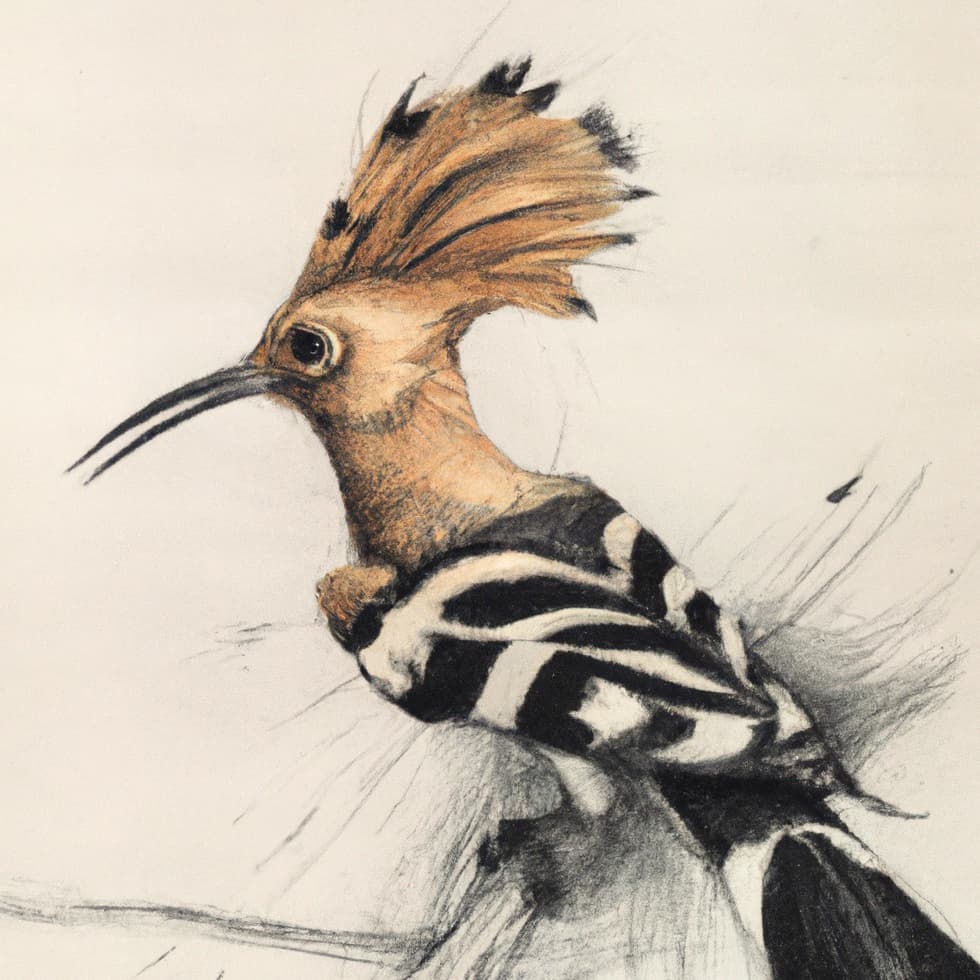
The Hoopoe is a striking and unique bird known for its distinctive plumage and impressive crest. Found throughout much of Europe, Asia, and Africa, the Hoopoe is a beloved and important species that has captured the hearts of birdwatchers and nature lovers. This blog will take a closer look at 27 curious facts about the Hoopoe.
27 Curious Facts about the Hoopoe
- The Hoopoe is a member of the family Upupidae, which includes only one other species, the Madagascar Hoopoe.
- They have distinctive pinkish-brown plumage, a long, curved bill, and a large, striking crest.
- Hoopoes are known for their unique call, which sounds like “hoo-poo.”
- They have short, sturdy bodies and strong legs, which are adapted for digging in soil and finding insects.
- The collective noun for a group of Hoopoes is a “crown” or a “dazzle.”
- Hoopoes are primarily insect eaters and are able to find food in a wide range of habitats, including grasslands, woodlands, and savannas.
- They have a distinctive “fan” display that they use during courtship, in which they fan out their crest and tail feathers.
- Hoopoes are able to breed at a relatively young age, with some individuals breeding in their first year.
- They are able to recognise individual members of their family and will often return to the same areas to forage and roost.
- Hoopoes are known to engage in sunbathing, in which they spread their wings and feathers in the sun to warm themselves.
- They are able to fly for long distances and are known to undertake impressive migrations between Europe and Africa.
- Hoopoes are able to form monogamous pair bonds that can last for multiple breeding seasons.
- In some cultures, Hoopoes are considered to be a symbol of good luck and protection.
- The oldest known Hoopoe fossil dates back to the Miocene epoch, around 12 million years ago.
- Hoopoes are found throughout much of Europe, Asia, and Africa.
- They are able to blend in with their surroundings and are often difficult to spot in the wild.
- Hoopoes are vulnerable to predation by a wide range of animals, including snakes, birds of prey, and domestic cats.
- They are important insect predators and play a vital role in controlling insect populations in their habitat.
- Hoopoes are known to nest in a variety of locations, including tree cavities, rock crevices, and burrows.
- They have been featured in a variety of cultural works, including poetry, literature, and art.
- Hoopoes are able to navigate using landmarks and visual cues in their environment.
- They have a relatively long lifespan for a bird of their size, with some individuals living up to 10 years in the wild.
- Hoopoes have a unique system of vocalisation that allows them to communicate with their mates and other members of their family.
- They are able to dig into the ground with their strong bills, which helps them to find insects and other small invertebrates.
- Hoopoes are known to roost in dense vegetation, such as shrubs and trees.
- They are able to survive in a wide range of habitats, from grasslands to deserts to mountain ranges.
- Hoopoes are a striking and important species that continue to inspire wonder and curiosity among birdwatchers and nature lovers around the world.
Where to Find the Hoopoe
Hoopoes are found throughout much of Europe, Asia, and Africa, and are commonly found in a wide range of habitats, including grasslands, woodlands, and savannas. They are particularly fond of areas with short vegetation and open ground, which provides suitable foraging habitats.
In Europe, Hoopoes are commonly found in open woodlands and grasslands, as well as in parks and gardens. They are also found in a variety of other habitats, including farmland, scrubland, and desert oases.
Feeding the Hoopoe
Hoopoes are primarily insect eaters, and are able to find food in a wide range of habitats, including grasslands, woodlands, and savannas. If you are interested in feeding Hoopoes in your local area, it is important to provide them with a varied diet that includes a mix of insects, such as crickets, beetles, and caterpillars.
It is also important to provide fresh water and to avoid feeding them food that is harmful to their health, such as bread or processed foods.
Hoopoes may also feed on small reptiles and other invertebrates, particularly during the breeding season.
Final Thoughts
The Hoopoe is a striking and unique species that continue to inspire wonder and curiosity among birdwatchers and nature lovers. With their distinctive plumage and impressive crest, Hoopoes are a favourite of many bird enthusiasts. Whether you are a seasoned birdwatcher or simply appreciate the natural world, the Hoopoe is a species that is sure to captivate and intrigue. So why not take a moment to appreciate the beauty of these amazing birds, and perhaps even offer them a meal in your local park or garden? With their important contributions to the ecosystem and their unique characteristics, Hoopoes truly are a treasure of the bird world.